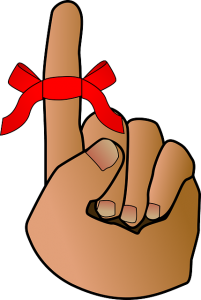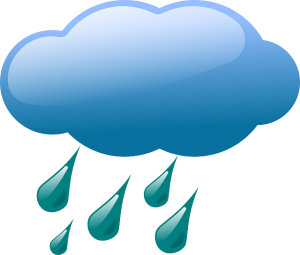2.10: Chapter 8
- Page ID
- 47756
\( \newcommand{\vecs}[1]{\overset { \scriptstyle \rightharpoonup} {\mathbf{#1}} } \)
\( \newcommand{\vecd}[1]{\overset{-\!-\!\rightharpoonup}{\vphantom{a}\smash {#1}}} \)
\( \newcommand{\id}{\mathrm{id}}\) \( \newcommand{\Span}{\mathrm{span}}\)
( \newcommand{\kernel}{\mathrm{null}\,}\) \( \newcommand{\range}{\mathrm{range}\,}\)
\( \newcommand{\RealPart}{\mathrm{Re}}\) \( \newcommand{\ImaginaryPart}{\mathrm{Im}}\)
\( \newcommand{\Argument}{\mathrm{Arg}}\) \( \newcommand{\norm}[1]{\| #1 \|}\)
\( \newcommand{\inner}[2]{\langle #1, #2 \rangle}\)
\( \newcommand{\Span}{\mathrm{span}}\)
\( \newcommand{\id}{\mathrm{id}}\)
\( \newcommand{\Span}{\mathrm{span}}\)
\( \newcommand{\kernel}{\mathrm{null}\,}\)
\( \newcommand{\range}{\mathrm{range}\,}\)
\( \newcommand{\RealPart}{\mathrm{Re}}\)
\( \newcommand{\ImaginaryPart}{\mathrm{Im}}\)
\( \newcommand{\Argument}{\mathrm{Arg}}\)
\( \newcommand{\norm}[1]{\| #1 \|}\)
\( \newcommand{\inner}[2]{\langle #1, #2 \rangle}\)
\( \newcommand{\Span}{\mathrm{span}}\) \( \newcommand{\AA}{\unicode[.8,0]{x212B}}\)
\( \newcommand{\vectorA}[1]{\vec{#1}} % arrow\)
\( \newcommand{\vectorAt}[1]{\vec{\text{#1}}} % arrow\)
\( \newcommand{\vectorB}[1]{\overset { \scriptstyle \rightharpoonup} {\mathbf{#1}} } \)
\( \newcommand{\vectorC}[1]{\textbf{#1}} \)
\( \newcommand{\vectorD}[1]{\overrightarrow{#1}} \)
\( \newcommand{\vectorDt}[1]{\overrightarrow{\text{#1}}} \)
\( \newcommand{\vectE}[1]{\overset{-\!-\!\rightharpoonup}{\vphantom{a}\smash{\mathbf {#1}}}} \)
\( \newcommand{\vecs}[1]{\overset { \scriptstyle \rightharpoonup} {\mathbf{#1}} } \)
\( \newcommand{\vecd}[1]{\overset{-\!-\!\rightharpoonup}{\vphantom{a}\smash {#1}}} \)
\(\newcommand{\avec}{\mathbf a}\) \(\newcommand{\bvec}{\mathbf b}\) \(\newcommand{\cvec}{\mathbf c}\) \(\newcommand{\dvec}{\mathbf d}\) \(\newcommand{\dtil}{\widetilde{\mathbf d}}\) \(\newcommand{\evec}{\mathbf e}\) \(\newcommand{\fvec}{\mathbf f}\) \(\newcommand{\nvec}{\mathbf n}\) \(\newcommand{\pvec}{\mathbf p}\) \(\newcommand{\qvec}{\mathbf q}\) \(\newcommand{\svec}{\mathbf s}\) \(\newcommand{\tvec}{\mathbf t}\) \(\newcommand{\uvec}{\mathbf u}\) \(\newcommand{\vvec}{\mathbf v}\) \(\newcommand{\wvec}{\mathbf w}\) \(\newcommand{\xvec}{\mathbf x}\) \(\newcommand{\yvec}{\mathbf y}\) \(\newcommand{\zvec}{\mathbf z}\) \(\newcommand{\rvec}{\mathbf r}\) \(\newcommand{\mvec}{\mathbf m}\) \(\newcommand{\zerovec}{\mathbf 0}\) \(\newcommand{\onevec}{\mathbf 1}\) \(\newcommand{\real}{\mathbb R}\) \(\newcommand{\twovec}[2]{\left[\begin{array}{r}#1 \\ #2 \end{array}\right]}\) \(\newcommand{\ctwovec}[2]{\left[\begin{array}{c}#1 \\ #2 \end{array}\right]}\) \(\newcommand{\threevec}[3]{\left[\begin{array}{r}#1 \\ #2 \\ #3 \end{array}\right]}\) \(\newcommand{\cthreevec}[3]{\left[\begin{array}{c}#1 \\ #2 \\ #3 \end{array}\right]}\) \(\newcommand{\fourvec}[4]{\left[\begin{array}{r}#1 \\ #2 \\ #3 \\ #4 \end{array}\right]}\) \(\newcommand{\cfourvec}[4]{\left[\begin{array}{c}#1 \\ #2 \\ #3 \\ #4 \end{array}\right]}\) \(\newcommand{\fivevec}[5]{\left[\begin{array}{r}#1 \\ #2 \\ #3 \\ #4 \\ #5 \\ \end{array}\right]}\) \(\newcommand{\cfivevec}[5]{\left[\begin{array}{c}#1 \\ #2 \\ #3 \\ #4 \\ #5 \\ \end{array}\right]}\) \(\newcommand{\mattwo}[4]{\left[\begin{array}{rr}#1 \amp #2 \\ #3 \amp #4 \\ \end{array}\right]}\) \(\newcommand{\laspan}[1]{\text{Span}\{#1\}}\) \(\newcommand{\bcal}{\cal B}\) \(\newcommand{\ccal}{\cal C}\) \(\newcommand{\scal}{\cal S}\) \(\newcommand{\wcal}{\cal W}\) \(\newcommand{\ecal}{\cal E}\) \(\newcommand{\coords}[2]{\left\{#1\right\}_{#2}}\) \(\newcommand{\gray}[1]{\color{gray}{#1}}\) \(\newcommand{\lgray}[1]{\color{lightgray}{#1}}\) \(\newcommand{\rank}{\operatorname{rank}}\) \(\newcommand{\row}{\text{Row}}\) \(\newcommand{\col}{\text{Col}}\) \(\renewcommand{\row}{\text{Row}}\) \(\newcommand{\nul}{\text{Nul}}\) \(\newcommand{\var}{\text{Var}}\) \(\newcommand{\corr}{\text{corr}}\) \(\newcommand{\len}[1]{\left|#1\right|}\) \(\newcommand{\bbar}{\overline{\bvec}}\) \(\newcommand{\bhat}{\widehat{\bvec}}\) \(\newcommand{\bperp}{\bvec^\perp}\) \(\newcommand{\xhat}{\widehat{\xvec}}\) \(\newcommand{\vhat}{\widehat{\vvec}}\) \(\newcommand{\uhat}{\widehat{\uvec}}\) \(\newcommand{\what}{\widehat{\wvec}}\) \(\newcommand{\Sighat}{\widehat{\Sigma}}\) \(\newcommand{\lt}{<}\) \(\newcommand{\gt}{>}\) \(\newcommand{\amp}{&}\) \(\definecolor{fillinmathshade}{gray}{0.9}\)Learning Goals
In this chapter, you will learn to:
- Read sight words and functional words
- Read long /a/ word patterns
- Write some long /a/ words
- Read simple texts
- Identify main ideas, characters, and events from a reading
- Write complete sentences
- Write a short paragraph
Talk About It
- What are some ways people can live on even after they have passed away?
- Why do you think people still remember Langston Hughes?
Picture Dictionary | ||
 |  |  |
| cancer | died | ashes |
 |  |  |
| remember | pride | dust |
 |  |  |
| autumn | handful | spring |
 | ||
| land | ||
Put the above words in alphabetical order.
___________________________________________________________
___________________________________________________________
Make a sentence using one of the above words.
___________________________________________________________
___________________________________________________________
Word Skills
Practice reading these words.
| a_e | ai | ay |
| age | maid | day |
| rake | pay | |
| cane | rain | play |
| cake | train | say |
| game | paint | stay |
| plane | tray | |
| grape | away | |
| tape | ||
| lake |
Match each picture to a word above.
 |  |  |
| 1. ________________ | 2. ________________ | 3. ________________ |
 |  |  |
| 4. ________________ | 5. ________________ | 6. ________________ |
 |  |  |
| 7. ________________ | 8. ________________ | 9. ________________ |
Read each sentence. Then cover it up. Try to write it. Use upper case letters correctly. Use periods and question marks correctly.
a. Will it rain today?
_______________________________________________
b. Your pay will be in the mail.
_______________________________________________
c. There is cake on the tray.
_______________________________________________
d. What game do you want to play?
_______________________________________________
e. I need a cane at my age.
_______________________________________________
You will see these words in the story. They all have the ā/ sound, like acorn.
| day | today | raindrop |
Use Your Reading Skills
Listen to Chapter 8. Then read Chapter 8 in BC Reads: Adult Literacy Fundamental English – Reader 2. If you see a word you do not know, look to see if there are parts in the word that you do know. For example, raindrop is made of rain and drop.
An audio element has been excluded from this version of the text. You can listen to it online here: https://opentextbc.ca/abealf2/?p=34
Check Your Understanding
1. How old was Langston when he died?
_______________________________________________
2. Where are his ashes kept?
_______________________________________________
3. Why is Langston still remembered today?
_______________________________________________
Read the poem with a partner. Talk about these questions.
4. What pictures do you see in your head when you read this poem?
5. What is your favourite Langston Hughes poem?
Writing
Grammar Rule
You have learned to use an upper case letter:
- To begin a sentence
- For the word I
- To begin the name of a person
- To begin the name of a place
You have learned to use:
- A question mark at the end of a question
- A period at the end of a statement
Use upper case letters and punctuation to make correct sentences.
1. who was langston hughes
2. he was a poet
3. what were his parents named
4. his parents were named carrie and james
5. where did he live
6. he lived in harlem
7. when did he live
8. he lived from 1902 to 1967
Writing Task
Brainstorm a list of how you want people to remember you when you are gone. Think of examples for:
- What you were like
- People you helped
- Things you did
- Things you made
Write a short paragraph about what you want to be remembered for.
Remember:
– Use an upper case letter to begin each sentence.
– Use an upper case letter for the word I.
– Use an upper case letter for the names of people and places.
– End each sentence with a period or question mark.
– You may wish to type your paragraph on a computer.
Answer Key | |||||||||||||
| Picture Dictionary | |||||||||||||
| |||||||||||||
| Word Skills | |||||||||||||
| QUESTION | ANSWER | ||||||||||||
| 1 | rain | ||||||||||||
| 2 | tape | ||||||||||||
| 3 | paint | ||||||||||||
| 4 | play | ||||||||||||
| 5 | cake | ||||||||||||
| 6 | plane | ||||||||||||
| 7 | tray | ||||||||||||
| 8 | |||||||||||||
| 9 | train | ||||||||||||
| Check Your Understanding | |||||||||||||
| QUESTION | ANSWER | ||||||||||||
| 1 | Langston was 65 years old when he died. | ||||||||||||
| 2 | His ashes are kept in Harlem. | ||||||||||||
| 3 | Langston is still remembered today for his beautiful poems, and for helping black people see themselves as a beautiful community. | ||||||||||||
| 4 | Answers will vary. | ||||||||||||
| 5 | Answers will vary. | ||||||||||||
| Writing | |||||||||||||
| QUESTION | ANSWER | ||||||||||||
| 1 | Who was Langston Hughes? | ||||||||||||
| 2 | He was a poet. | ||||||||||||
| 3 | What were his parents named? | ||||||||||||
| 4 | His parents were named Carrie and James. | ||||||||||||
| 5 | Where did he live? | ||||||||||||
| 6 | He lived in Harlem. | ||||||||||||
| 7 | When did he live? | ||||||||||||
| 8 | He lived from 1902 to 1967. | ||||||||||||
Attributions
See the Attributions page near the end of this book.




